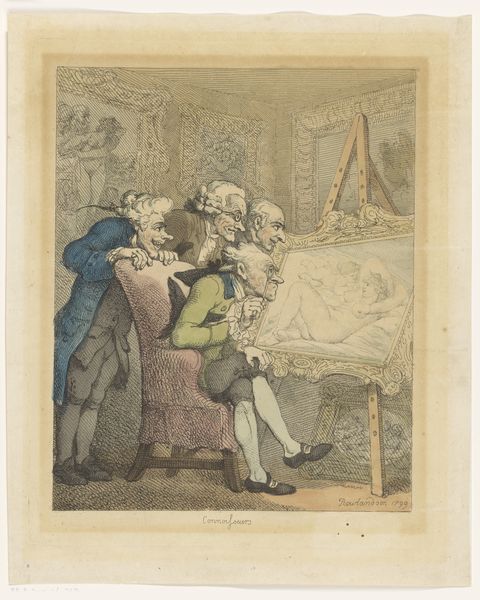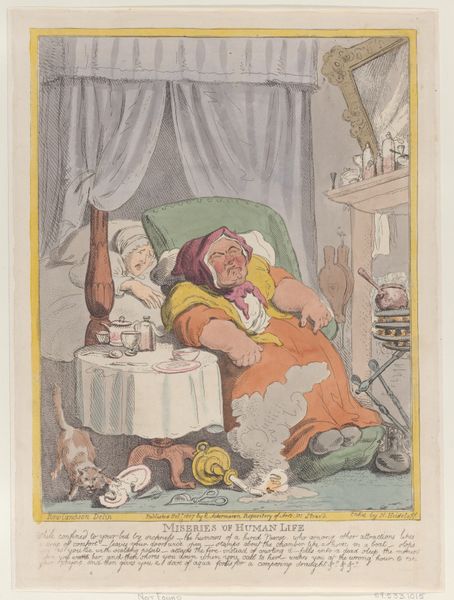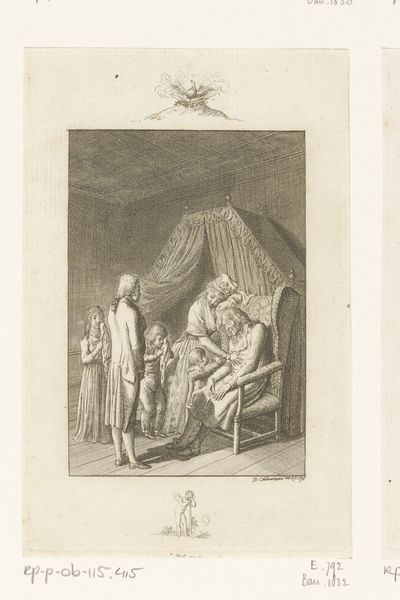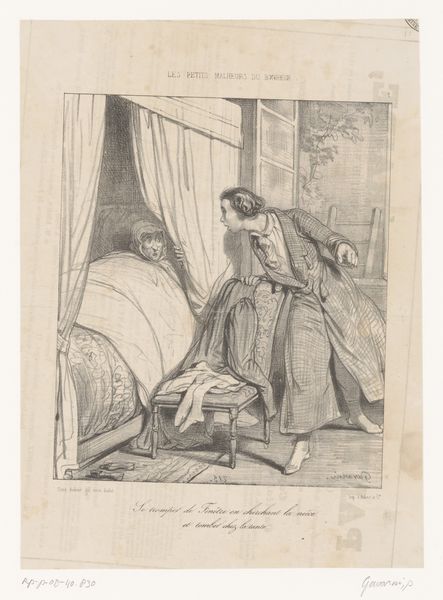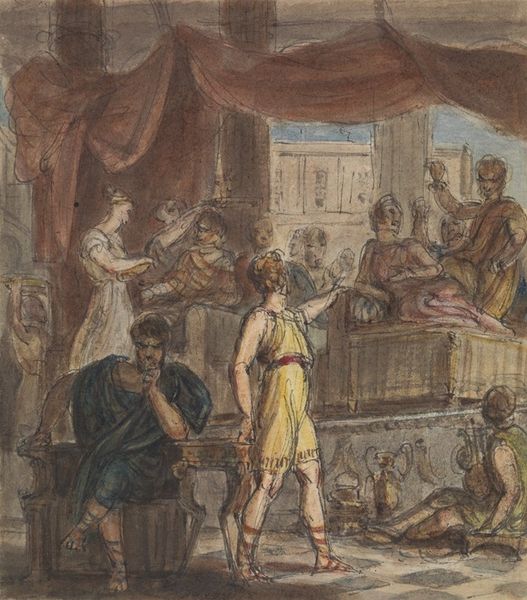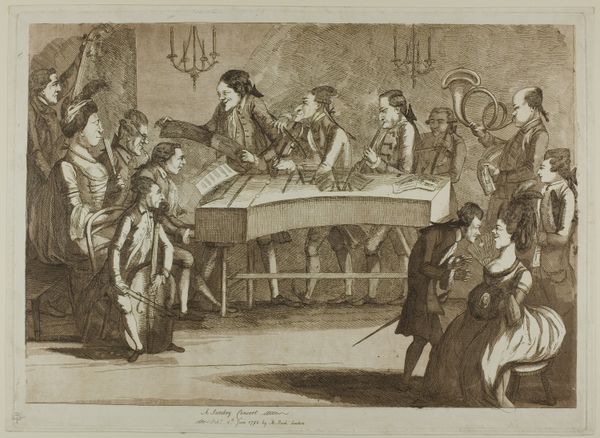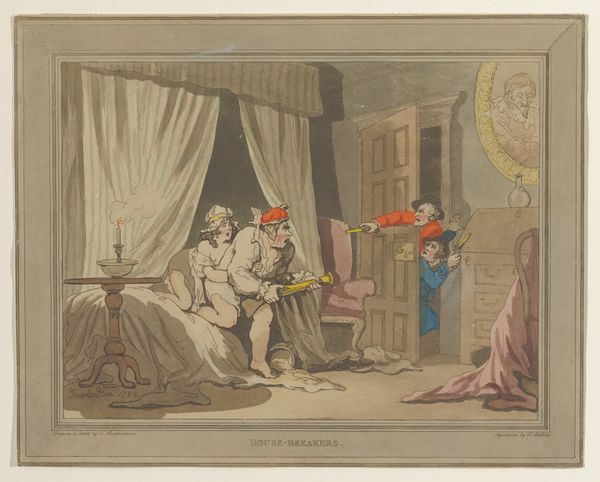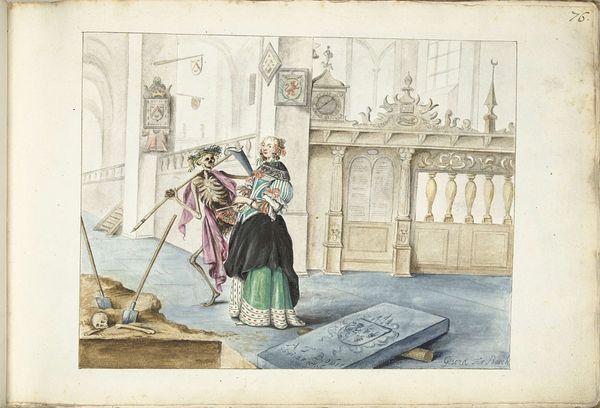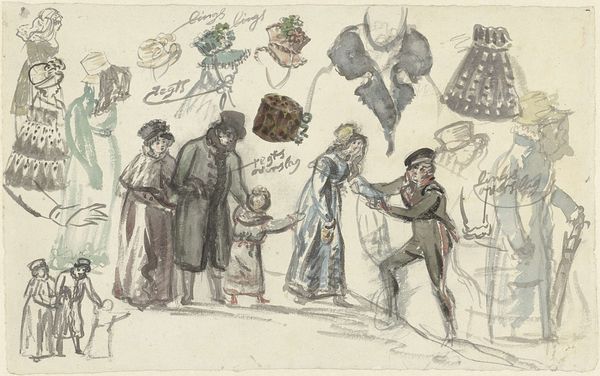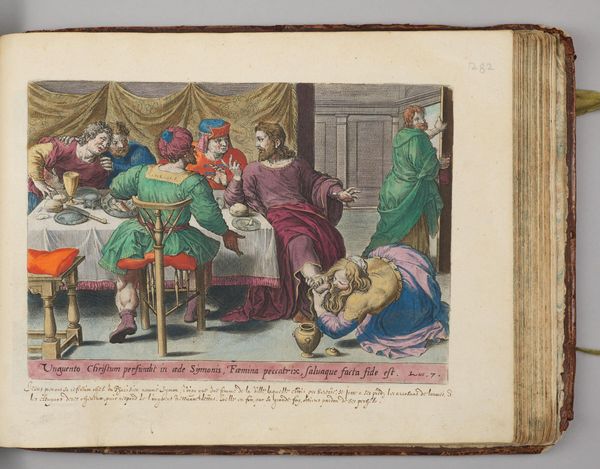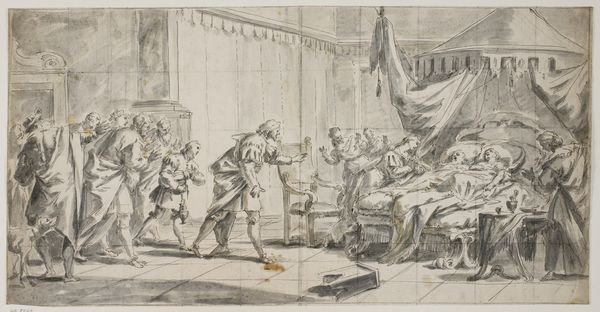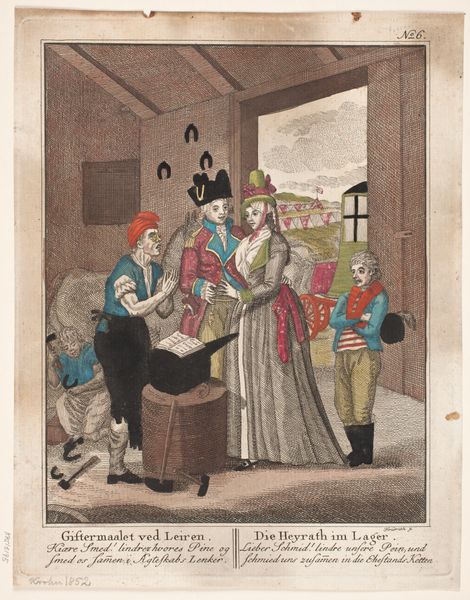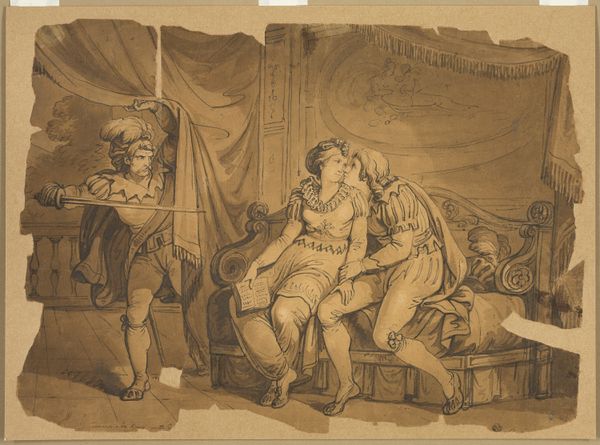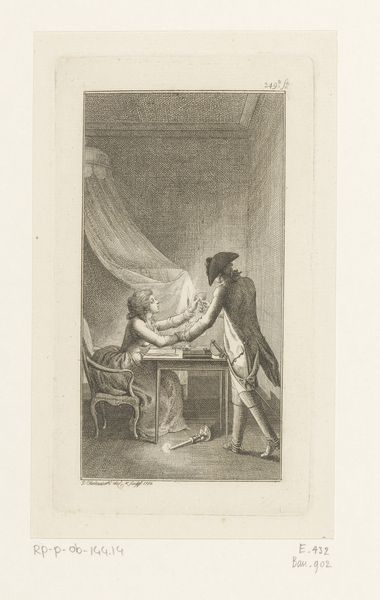
print, watercolor
#
portrait
#
neoclacissism
#
water colours
# print
#
watercolor
#
history-painting
Dimensions: image: 25.4 × 24.13 cm (10 × 9 1/2 in.) sheet: 29.85 × 25.4 cm (11 3/4 × 10 in.)
Copyright: National Gallery of Art: CC0 1.0
Editor: So, here we have "The Death of George Washington," a print with watercolor, created around 1800 by E. Pember and S. Luzerder. It depicts Washington on his deathbed. There's almost a theatrical, stage-like quality to the composition, which I find somewhat unsettling considering the gravity of the scene. How do you interpret this work? Curator: What's immediately striking is how this piece operates as both a historical record and a piece of political theater, as you observed. Remember, representations of Washington, particularly after his death, were highly curated to solidify his legacy and the young nation's identity. Editor: So, this wasn't necessarily meant as a straightforward depiction of what happened? Curator: Precisely. It’s more of a carefully constructed tableau. Consider the print medium; it allowed for wide dissemination, turning Washington's death into a public spectacle of mourning, while reinforcing specific ideas about his virtues and the nation's grief. Look at the figures surrounding him: they are presented almost as witnesses, reinforcing the event's importance. How do you think this visual storytelling contributed to Washington’s posthumous image? Editor: It seems to mythologize him, really, elevating him to almost saint-like status. I also see echoes of Neoclassicism, imbuing it with that sense of solemn grandeur and order. Curator: Exactly. The artists employed familiar visual language to frame Washington’s death within a context of virtue, sacrifice, and national unity, while speaking to different socio-political forces operating during this period in early United States history. This contributed to a collective memory around a complicated political legacy. Editor: That’s fascinating. I initially saw just a slightly odd depiction of a historical event, but now I recognize the deliberate construction of a national narrative. Curator: And that understanding, seeing the layers of historical context, transforms how we understand and value the artwork itself.
Comments
No comments
Be the first to comment and join the conversation on the ultimate creative platform.
